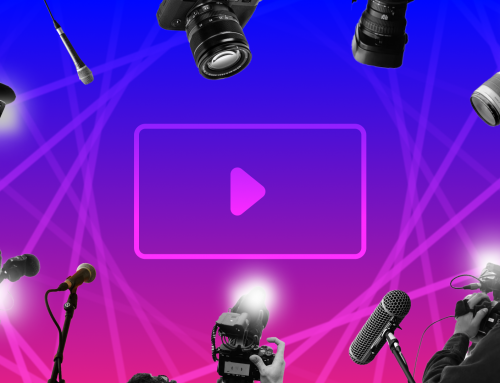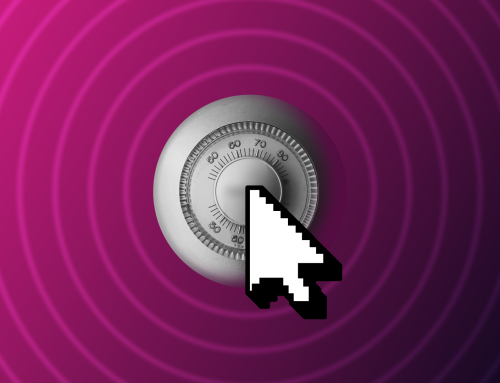Finding a definition
The expression “online challenge” describes viral content on the net in which one or more people attempt a specific activity, often daring other users to do the same. The phenomenon also takes the name of “web challenge”, “social challenge” (especially if it arises and spreads on social networks), or more generically “extreme challenge” or “viral challenge”.
In recent years, online challenges have mostly taken a standard format: they begin with a video showcasing some kind of (often physical) performance. Once published online, the video obtains moderate popularity – mainly through social networks, through mechanisms of sharing and imitation. The presence of users-protagonists who record themselves or are recorded while carrying out a specific action is central. The call for other users to attempt the same feat is more or less implicit depending on the specific case: it can be expressed openly through gestures or words, or it can be veiled, indirectly arousing curiosity and challenging the user-viewers.
But why do so many people decide to take part in an online challenge? There are several possible reasons: to get a high number of views and popularity on the Net, to personally participate in the creation of trendy content on social networks, to test themselves or feel accepted within a group or community.
Some of the most famous online challenges have included the 2014 ice bucket challenge – where many more or less famous people spilled a bucket filled with ice and frozen water on their head with the goal of raising public awareness about amyotrophic lateral sclerosis and boosting donations for scientific research – and the infamous tide pod challenge – with several dangerous viral videos between 2017 and 2018 inviting users to ingest dishwasher or washing machine capsules. Cyclically, over the summer months, videos that show groups of friends or families testing each other using various objects have also gained popularity: a great example is the water bottle flip challenge, where plastic bottles were thrown in the air in an attempt to make them fall vertically on a surface.
A key aspect that emerges clearly from these examples is the centrality of the Internet not only to favor the virality of content, but also to bring a challenge to international attention. For instance, there have been several cases where old challenges have been brought back by a single user who was well-known online or had enough followers to popularize it again just by accepting a challenge.
This happens in a context where the Internet and social networks often play a central role in the lives of people, young or not. The desire to be accepted is often achieved by obtaining enough online success, be it measured in Instagram followers, Facebook likes or TikTok notoriety. From this perspective, online challenges are often a tool to earn fame, be accepted within a community or even cyberbully, when they’re carried out despite the initial protagonist’s intention or with the precise intention to target particular categories.
However, it is important to keep in mind that these kinds of challenges are not only a result of the Internet. Even before the web, phenomena revolving around imitation and challenge abounded, especially among teenagers. It is no coincidence that challenges are usually addressed to teenagers, and that younger people end up taking on both the role of the protagonist and that of the public.
But why teenagers? Facta contacted psychologist and psychotherapist Matteo Lancini, an expert on the subject, to explain the phenomenon in greater depth.
Young people are thus living in an increasingly online world, where risks and benefits often coexist in close proximity. What data is available on the phenomenon?
Teenagers between real and virtual
It’s no secret that the Internet is increasingly present throughout teenagers’ formative years. To them, the web plays a central role as a vehicle for information and opportunities as well as a necessary tool to use and understand, but it can also be a risky place in some cases.
According to Eurostat’s Being young in Europe today report, 94 percent of young people used the Internet on a daily basis in 2019, compared to 77 percent of the entire population. The figure is not only higher when compared to the population in general, but also up compared to 2011, when the percentage of young people who use the Internet everyday amounted to 78 percent.
The use of technological tools is different within the different age groups of the European population: in 2017, about three quarters (76 percent) of young people used a computer every day – a value that’s 14 percentage points higher than among the adult population (62 percent). The use of computers has also shrunk, in favour of other devices (mainly smartphones) among younger people, while the percentage of the adult population that used computers on a daily basis increased between 2011 and 2o17, albeit at a modest pace.
The habits of young people are also affected by the daily choices made by their parents and educators. Among these, the presence of an Internet connection at home is particularly relevant: in 2019, throughout EU member states, nine out of ten families on average had access to the Internet at home. In 2009, the percentage was 55 per cent. In 2019, 98 percent of families with dependent children had Internet access at home, compared with 82 percent of families without children. The Covid-19 pandemic made the Internet even more indispensable for students all over the world, transforming it into the main vehicle for education and the most suitable tool for maintaining human relations.
Exploring the relationship between teenagers and online challenges, the data confirm that the phenomenon is particularly present among young people. According to the ESPAD #iorestoacasa report, published this year by the Institute of Clinical Physiology of the Italian National Research Council (CNR), 15 percent of adolescents between the ages of 15 and 19 in Italy in 2020 had at least heard of online challenge, and they stated that they are often used as an admission tool in particular online groups or communities. The format is the same as described above: it involves demonstrating that you have overcome challenges by publishing a video of the attempt online. Female respondents were more likely to pursue an online challenge, and in most cases (45 percent) the challenge travels via “word of mouth” through friends. In only 14 percent of cases were relatives directly involved in sharing the challenge. Teenagers at greater risk of Internet addiction are also more likely to have heard about challenges. In general, among those who admitted to having been asked to participate in a challenge, a fifth said they accepted.
New generations therefore definitely conduct an increasingly onlife existance. The expression was coined by the professor of philosophy and information ethics and director of the digital ethics laboratory of the University of Oxford Luciano Floridi and other researchers to indicate the way in which the technology of communications has changed our life. In an everyday life where the distinction between real and virtual is increasingly subtle, what are the risks and benefits for our young people?
According to some experts, it is important to take into account the psychological-cognitive development that adolescents experience, their relationship with the Internet and, from the point of view of physiological processes, the production of dopamine – a neurotransmitter that’s present in the central nervous system, in particularly high doses within the encephalon. Dopamine is involved in many human activities (behavior, cognition, motivation, inhibition, sleep, mood, learning) and its release makes people feel a rush of pleasure. From a neurological point of view, that rush is equivalent to being rewarded after having completed a task. During adolescence, dopamine levels decrease, but the quantity released in relation to pleasant experiences increases. For instance, there’s a higher level of gratification after performing a risky or forbidden act, and this leads to risky behaviors.
What does neuroscience know about this? How do adolescent brains work, and how do they experience risk? What can adults do to help young people who are online a lot? We asked Matteo Lancini.
Before the internet
The idea of challenging one’s limits is intimately linked to human nature, and the very concept of human progress has been repeatedly interpreted as an attempt to raise the bar of what’s possible, pushing the idea of what is humanly achievable further and further.
It may sound banal, but we could say that challenges are the way in which human beings come to terms with their mortal nature, exploring the boundaries of their own body and abilities. After all, popular culture is full of references to the concept of challenge: from the chivalrous duels of the Middle Ages to “chickie runs” – the crazy car race shown in the film Rebel without a cause – or the bet at the center of one of French author Jules Verne’s most successful adventure novels, Around The World in 80 Days.
Challenges have been ultimately sublimated through sports competitions: the achievement of new records is still one of the engines that move the passions and stories we witness every four years with the Olympics. It’s a prime example of individuals measuring themselves against fellow human beings and the world, but also against themselves and their limits. In most areas, challenges have been codified or inserted within a framework of pre-established rules, with the aim of avoiding excesses and irregularities, but this does not apply to every kind of challenge.
Some challenges are more extreme than others, especially when they take place between teenagers and they arise from the desire to show courage in the face of dangerous – often too dangerous – circumstances. This is the case, for example, of self-restraining games, which according to research published by the Centers for Disease Control and Prevention (the US body for the control and prevention of diseases), between 1995 and 2007 caused at least 82 victims in the 6-19 years old age range in the United States alone. The CDCs call it “the choking game”, and it takes place by compressing one’s airways (or those of a consenting person) “to reach a brief state of euphoria caused by cerebral hypoxia” , or from the decrease of oxygen to the brain. The phenomenon is also known as airplaining (from the feeling of lack of air that is found at high altitude, in an airplane), space monkey, suffocation game, pass out game, dream game or blackout.
In France, the same phenomenon – called “le jeu du foulard” – has caused “a dozen deaths every year” since 2000, according to an association created to raise awareness among young people on the issue. In 2018, the American weekly Time dedicated an article to the topic, writing that “the Choking Game’s instructions were once spread through word of mouth and carried out in pairs or groups, with one child squeezing air out of another but stopping just short of the danger point”.
Along the lines of the choking game, there’s another challenge drives teenagers to snort butane gas (that can be found in lighters) to obtain a brief sensation of alteration, with often fatal consequences, and one that leads them to “surf” on the roof of moving cars (causing 58 deaths and 41 injuries in United States between 1990 and 2008). In Italy, over the past decades, there’s been a wave of people throwing stones from overbridges: according to a report by the Osservatorio sassi dal cavalcavia organised by the Association of Supporters and Friends of the Traffic Police (ASAPS), the phenomenon is “old and endemic”, having caused 8 deaths in the country between 1986 and 2005. The episodes were mostly triggered by minors.
Extreme challenges, however, made a leap into mainstream culture thanks to social networks. These formidable tools for disseminating content and ideas entered their mature phase starting from 2006, with the global success achieved by Facebook and Twitter. The platforms created by Mark Zuckerberg and Jack Dorsey have contributed to revolutionizing the languages and aggregative dynamics of the generation known as “digital natives”, representing an indispensable springboard for subsequent experiences of online social networks.
Challenges run amok online
It’s impossible to discuss current social media platforms without mentioning Instagram and TikTok. These apps are currently considered Gen Z’s virtual places of choice, as well as the main actors in a new era of social networking centered around sharing images and videos, supplanting the centrality of text that characterized the first decade of the 2000s. Alongside YouTube, Instagram and TikTok have quickly become the ideal means of communication to spread challenges that can now fully be defined as “social challenges”.
To learn more about the role of new media (and in particular of TikTok) in the creation and dissemination of viral challenges, we asked Federico Rognoni, a very young social media strategist and communication expert, about the platform, that’s dedicated to short videos.
Rognoni, what makes TikTok an ideal tool for spreading online challenges?
Today, challenges that spread through social networks are frequently discussed in the news. Very often, this coverage ends up putting digital platforms on trial due to the new role of responsibility and supervision over the content shared on their pages that has been thrust upon them.
Yet, as we already mentioned, social challenges are by no means a recent dynamic. The first content of this type to be successful among young people was rather harmless, and it dates back to the early 2000s, when the “saltine cracker challenge” prompted thousands of teenagers to try to eat six salty crackers in less than 60 seconds. It was the dawn of the Internet, and this “challenge” can be considered a hybrid between a real-life challenge and an online challenge. It was triggered (unintentionally) by the famous American quarterback Peyton Manning, who, according to an article published in 1996 by the Associated Press, often challenged himself to eat many salty crackers to train his competitive nature.
Another food-related challenge was the cinnamon challenge, which first circulated online in 2001 and then came back in style in 2012. It consisted of ingesting a spoonful of cinnamon without drinking anything and recording your reaction. Despite its seemingly harmless nature, this phenomenon caused the death of a 4-year-old boy in Kentucky in 2015 and almost killed several people. The reason lies in the hydrophobic nature of cinnamon, which when introduced in large quantities into the windpipe can make it difficult to swallow and triggers an autoimmune reaction that can turn into pneumonia.
In 2005, the “salt and ice challenge” consisted in sprinkling your body with salt and then rubbing ice over it and timing your resistance to the stinging combination. The idea was unfortunate, as suggested by the second degree burns recorded in at least two American minors. In the same time frame, another challenge online asked people to eat two bananas and then drink a Sprite without gagging. A similar but definitely more famous one revolved around drinking Diet Coke and eating Mentos. The list of foods involved in challenges was further extended between 2011 and 2013, with the chili pepper and gallon challenges.
The 2010s raised the bar in terms of danger. starting from 2013, we have witnessed the “fire challenge” (teenagers setting themselves on fire on Youtube), the “tide pods challenge” (eating detergent capsules meant for washing machines), the “bird box challenge” (performing actions while blindfolded, including dangerous ones such as driving) and the “condom snorting challenge” (putting a condom in the nose and then taking it out of the mouth).
In all these cases, the Internet has represented an exceptional tool for the amplification of negative dynamics, but it’s not always the case. The idea of challenging your limits can be channeled in many different ways, and online challenges can be leveraged for charity – as with the “ice bucket challenge” and the related donations for amyotrophic lateral sclerosis – or, as with the “mannequin challenge”, just for fun. Let’s go back to our expert, Federico Rognoni, to understand why Internet users are fascinated with online challenges, to the point of staging extreme acts and praiseworthy acts of solidarity.
Ultimately, social challenges, just like the Internet itself, are a complex practice, and it’s easy to be confused. In the next chapters, we will try to make sense of this world, setting virtuous dynamics apart from potentially harmful ones and removing the layers of disinformation that often makes the task of finding one’s way around the Internet hard.







